A wart is a benign formulation on human skin. It is usually a few millimeters in size, but there are also larger types of warts. Such neoplasms can appear in different parts of the human body.
As you know, not all warts are safe. There are certain types of skin lesions that need to be removed immediately. This is necessary to prevent further complications.
Classification of warts
In medicine, there are various types of benign formations that appear on human skin. They differ from each other in appearance, have different developmental details, as well as location.
There are the following types of warts:
- normal (most common);
- plantar (feet observed);
- pointed (condylomas);
- filiform (acrochords);
- flat.
Common warts
Such neoplasms have a diameter that does not normally exceed 1 cm. They are relatively dense tombs with an uneven surface and clear boundaries. Skin lesions associated with this species are characterized by the following features:
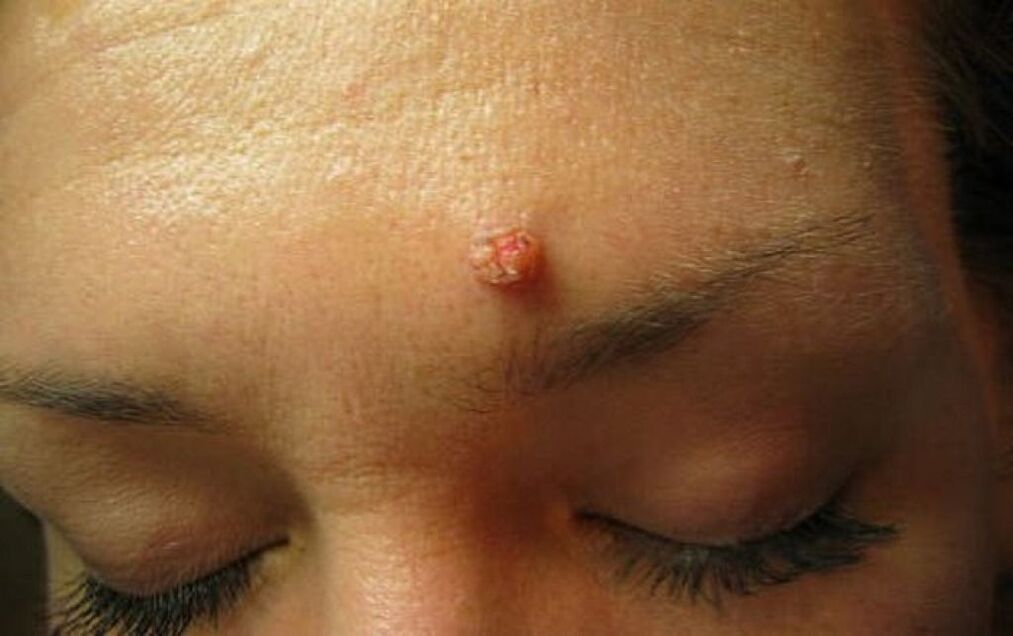
- round shape;
- color from yellow to dark gray;
- Common warts are often seen on the elbows, fingers, knees, lips, and other areas of the body that are frequently injured.
Sometimes the formations go away on their own, but in most cases they require long - term treatment.
Plantar warts
Such outbreaks get their name from their placement. They are on the legs, have a convex shape, but because of the constant pressure created by the weight of the human body, they can become flat. The gel is surrounded by a keratinized layer of skin.
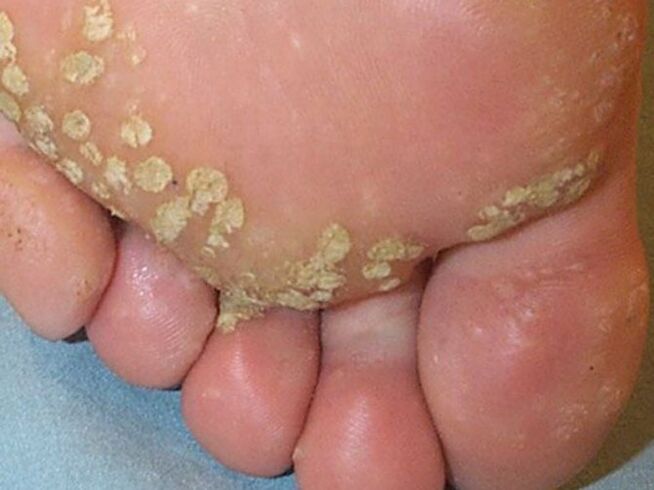
Plantar growths can be uncomfortable and painful. This type of benign lesion differs from beads in that small droplets of blood oppose each other when they are cut, rather than spilling liquid. Plantar warts can cause problems with wearing shoes. They are able to appear at any age.
Genital warts
There are a large number of pointy nodes that are interconnected in fibroepithelial formation. Their surface can be white or red, sometimes bleeding and causing pain.
Pointed benign neoplasms usually appear on the mucous membrane, where it transfers into the skin. In the future, they will grow, they will grow big. As a result, tumor-like growths are formed.
Warts filiform
Such a formation on the skin gets its name from the shape. Filiform warts are narrow and long. Localized locations are as follows:
- face;
- neck;
- lips.
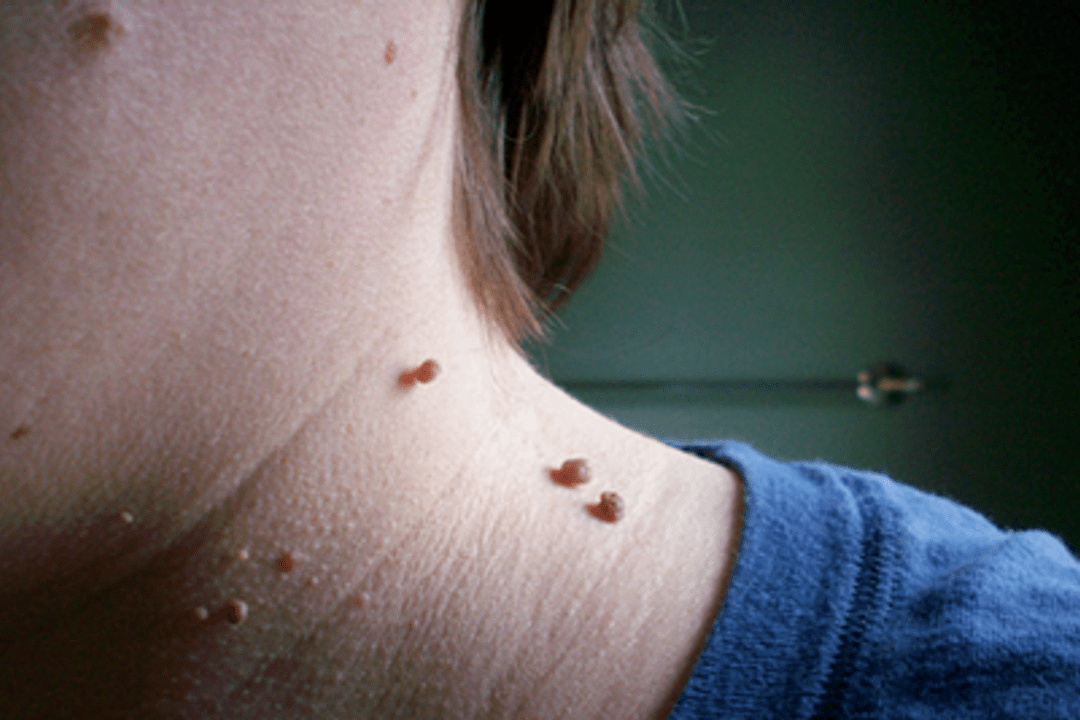
Externally, the filament formations are like a broken thread. They can be seen on the body of anyone of any age, but are often seen in the elderly. As they develop, filament formations change their appearance:
- First, the axils have the appearance of small lumps on the skin. For this reason, they are easy to mix with a mole.
- In turn, the node increases in size, acquires a long shape. In some cases, acrochords are round, but they still have a thin stem.
- In consistency, the formation is elastic and relatively dense. Its length is usually no more than 5 mm, however, there are cases when the acrochord is more than 1 cm.
Some people have several formations on the body that grow together. Therefore, they look like cockscomb. The acetals may turn brown or remain flesh-colored. Sometimes itch.
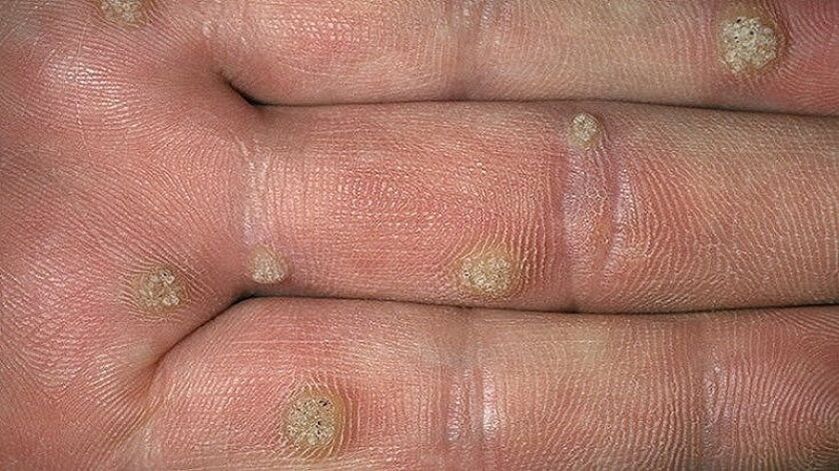
Flat warts
Such configurations are notes that are fair to the touch. They stand out with a yellow-brown color and are usually located on the eyes and face. These nodules are common in children, but they can also be seen in the elderly. These benign neoplasms do not usually turn into malignant tumors. This type of growth is extremely rare.
Flat warts rise slightly above the surface of the skin. They are characterized by a smooth surface and clear boundaries. A distinctive feature is the lack of diluted skin, because smoothness and brightness are preserved. Such formations are localized on the front, lower leg, dorsum of the hand.
Advice!For neoplasms on the body, you should definitely seek the advice of a dermatologist. He will not be able to know exactly what type they are. This will eliminate the development of malignant tumors on the skin.
Senile warts
There are other types of benign formations that emerge on the human body, which can be distinguished into a separate category. Their features are:
- senile warts (seborrheic keratosis) are seen exclusively in the elderly and do not require treatment;
- they are usually located on the skin, often covered with clothing, and are rarely seen on the hands and face;
- such neoplasms develop from the epidermis.
Features of multiple seborrheic keratosis are common. Clinical manifestations depend on the timing of development and site. The early elements are small flat spots of pink or yellow color with clear borders, as well as a warty surface.
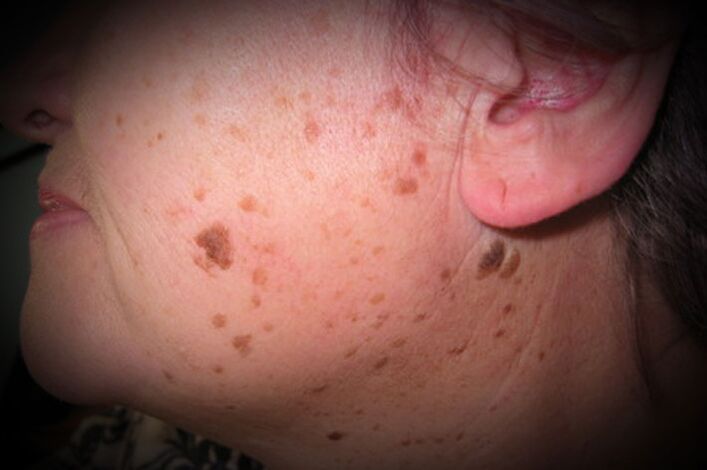
They are like oily claws on the skin, which can be easily removed. These claws are then compacted, flushed with cracks. Over time, they change to a mushroom shape, becoming black or dark brown.
The formations have a soft consistency, their boundaries may not be completely clear, even rough. However, they are similar to melanoma. In some cases, elements of seborrheic keratosis have a dome-shaped form.
Advice!In the presence of senile warts, it is recommended to significantly increase the amount of vitamin C entering the body. It helps prevent new stains from appearing. It must be borne in mind, however, that too much vitamin C can lead to some changes in the functioning of the stomach, as well as contribute to the appearance of kidney stones.
The choice of treatment depends on the types of warts being treated. Either way, this process should not be left to chance. Timely contact with a dermatologist will allow the patient to undergo the procedure to remove skin formations with ease and complications. In addition, the wart can be confused with malignant diseases, certainly not necessary to delay its treatment.














































































